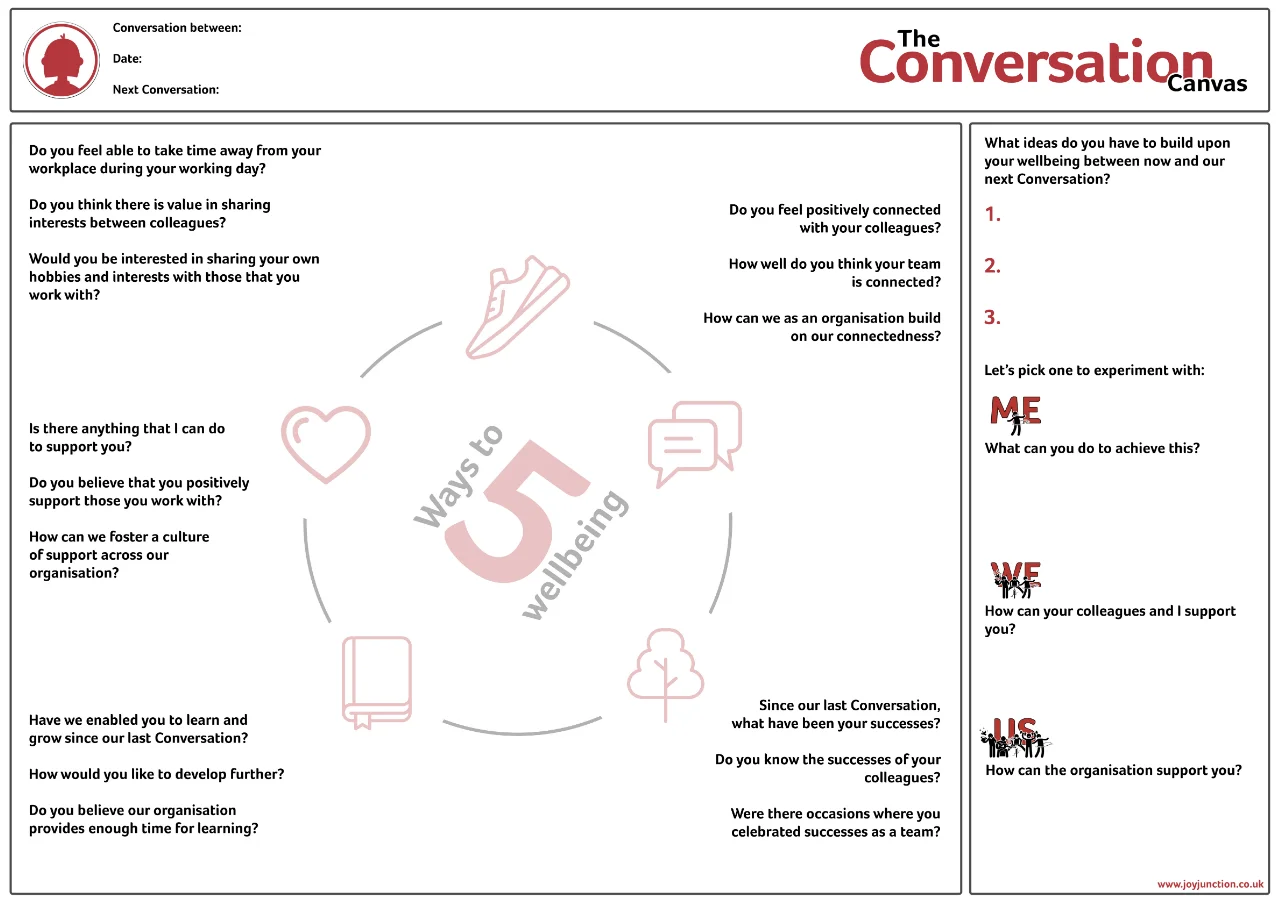
Imagine stepping into your manager’s office, the tension palpable as you prepare to discuss something deeply personal; your wellbeing.
It’s a common scenario where both parties may feel uneasy, yet it’s an essential conversation for fostering a supportive work environment.
Ensuring that both line managers and employees are comfortable in these discussions is crucial, and a structured approach can be instrumental in guiding these conversations.
Workplace wellbeing is more than just a trend; it’s a cornerstone of a thriving organisation. Yet, conversations about personal wellbeing can be fraught with discomfort and awkwardness.
Line managers may feel unprepared or anxious about broaching such topics, while employees might fear judgement or repercussions. This mutual apprehension can create a barrier to open, honest communication.
Using a structured framework for wellbeing conversations can help alleviate these concerns by providing a clear yet flexible guide. It’s not about rigid scripts but about creating a safe space where both parties feel supported.
The “Five Ways to Wellbeing” framework, aligned with Maslow’s Hierarchy of Needs, ensures that conversations cover key areas of wellbeing while addressing fundamental human requirements.
Start by creating an environment conducive to open dialogue. Choose a private, quiet space where interruptions are unlikely.
Begin the conversation with a clear intent: emphasise that the goal is to support the employee’s wellbeing, not to judge or criticise.
Example: “I’ve noticed that you’ve seemed a bit off lately, and I want to check in to see how you’re doing. I’m always here to support you”.
Prompts based on the Five Ways to Wellbeing (Connect, Be Active, Take Notice, Keep Learning, and Give) help steer the conversation naturally without feeling forced. This approach allows employees to share as much or as little as they are comfortable with.
Example: “Do you feel able to take time away from your workplace during the day?” (Take Notice) or “How well do you think our team is connected?” (Connect).
Active listening and empathy are key.
Acknowledge the employee’s feelings and concerns without immediately jumping to solutions. Sometimes, just being heard can be a significant step towards feeling supported.
Example: “It sounds like you’re feeling overwhelmed with the current workload. Is there a way that we can alleviate this?”
Instead of dictating solutions, work together to find practical steps that address the concerns raised.
Brainstorm ways to enhance wellbeing, both individually and collectively, while considering Maslow’s Hierarchy of Needs to ensure fundamental needs are met.
This is where the “Me, We, and Us” framework is particularly useful:
Example: “What ideas do you have to improve your wellbeing? How can I and the team support you in this? And what support do you think you need from our organisation?”
Wellbeing is not a one-time conversation. Regular check-ins reinforce that the support is ongoing and not just a box-ticking exercise.
Example: “Let’s catch up in a couple of weeks to see how things are going. In the meantime, is there anything that I can do to help you?”
We recommend longer wellbeing conversations take place at least once every 12 weeks, with smaller discussions as often as possible.

Using a structured approach ensures that the conversation stays on track and covers essential aspects of wellbeing without feeling overwhelming. For instance, during a discussion, a manager might ask:
By embedding these questions into regular one-on-one meetings, wellbeing discussions become a natural part of the workplace culture rather than an exceptional occurrence.
For a culture of wellbeing to truly take root, both line managers and employees need to view these conversations as a partnership.
Managers should be trained not just in the technical aspects of their roles but also in emotional intelligence and active listening skills. This investment in training can pay dividends in creating a more engaged and resilient workforce.
Consider a company where managers are encouraged to start meetings with a quick check-in on how everyone is feeling. This simple practice can create a culture where employees feel their wellbeing is genuinely valued.
Furthermore, it’s essential to normalise these conversations.
When senior leaders openly discuss wellbeing and use structured frameworks for these discussions, it sets a powerful example. It signals to the entire organisation that discussing wellbeing is not just accepted but encouraged.
Our Conversation Canvas is particularly useful in bringing these elements together.
By incorporating the Five Ways to Wellbeing framework and the “Me, We, and Us” approach, the canvas ensures that conversations are holistic and address the full spectrum of employee needs.
This tool helps embed wellbeing into the daily rhythm of work, making these conversations a regular, valued part of organisational culture. It can be downloaded for free through this link.
Ensuring that both line managers and employees are comfortable in conversations about wellbeing is vital for a healthy workplace. The Conversation Canvas is a valuable tool in this endeavour, providing a structured yet flexible approach to these sensitive discussions.
By preparing appropriately, using the Five Ways to Wellbeing framework, showing empathy, collaborating on solutions using the “Me, We, and Us” framework, and maintaining regular follow-ups, we can create a culture where wellbeing is openly discussed and genuinely supported.
Let’s start integrating the Conversation Canvas today and make wellbeing conversations a comfortable and integral part of our workplace. Together, we can build a supportive environment where everyone feels valued and heard.
In doing this, we not only enhance individual wellbeing but also foster a more connected, engaged, and productive organisation.